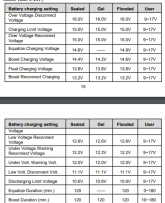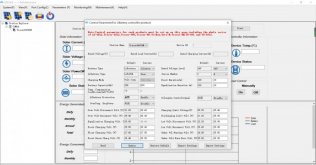Pappion
Retired Engineer Tech
- Joined
- Nov 26, 2020
- Messages
- 551
I think you got it. It's a good question for them. My Epever spec: Boost Reconnect Charging Voltage, 13.2vIs that because the late-waking-up MPPTs see the voltage of the already-wakened MPPTs already actively charging the battery rather than voltage of the battery itself?
FYI: My old camper had just a 100W panel and 2 size 31 AGM. 2 hrs of absorption at 5.5A was not enough for lap top use and furnace blower. I would retrigger Boost by throwing a towel over the panel and use the laptop to bleed off the AGM surface charge. At 12.9v I could pull off the towel and Boost would start again.
Last edited:




